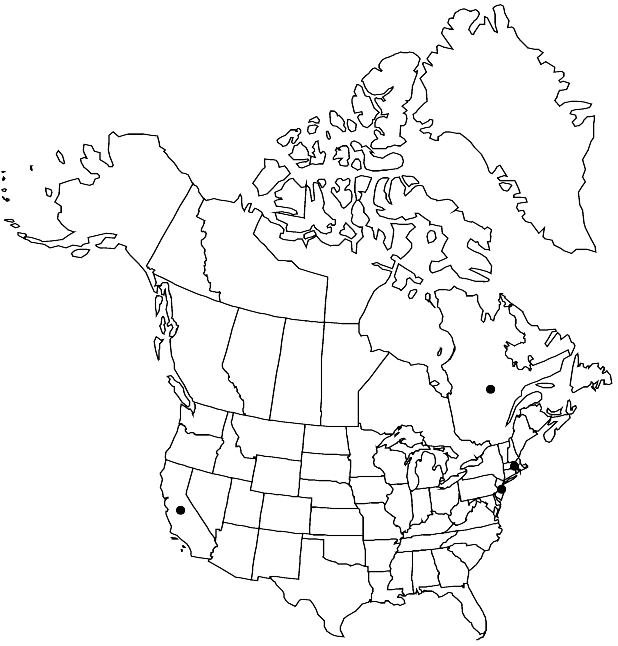Diplotaxis erucoides
Syst. Nat. 2: 631. 1821.
Annuals or biennials, not scented. Stems erect, 1–4(–8) dm, densely pubescent throughout, (trichomes retrorse, appressed). Basal leaves: blades elliptic to obovate, 2.5–8 cm × 10–40 mm, margins sinuate to pinnatifid or lyrate, (2–5 lobes each side), (surfaces pubescent throughout, trichomes antrorse). Cauline leaves (distal) sessile; blade (base cuneate to broad, truncate), margins similar to basal, (distally reduced, subtending proximal flowers). Fruiting pedicels 3–10(–22) mm. Flowers: sepals 4–5.5 mm, pubescent, trichomes ± flexuous; petals white (turning purple when dried), 7–10 × 4–5 mm; filaments 4–6.5 mm; anthers 1.5–2 mm; gynophore obsolete or to 0.5 mm. Fruits erect-patent, 2–3.5(–4) cm × 1.5–2(–2.5) mm; terminal segment beaklike, 2–5 mm, 1- or 2-seeded. Seeds 1–1.2 × 0.5–0.8 mm. 2n = 14.
Phenology: Flowering summer.
Habitat: Ballast and waste places
Distribution

Introduced; Que., Calif., Mass., N.J., Eurasia, Africa, introduced also in South America (Argentina).
Discussion
Diplotaxis erucoides was introduced from Europe as a ballast plant in the last century and may have failed to persist in some of the recorded provinces and states.
Selected References
None.